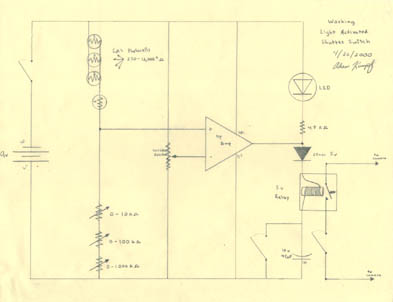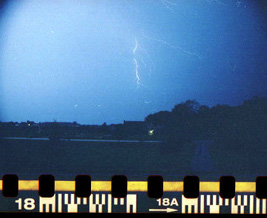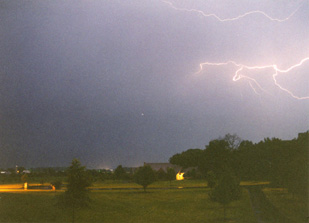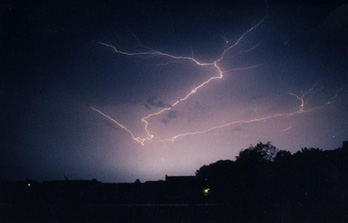Back in high school I created this device to help me take pictures of lightning.
The lightning photography device works by signalling to a camera to take a picture as soon as it senses an increase in the amount of light in a certain field of view. To sense the light, 4 CdS photocells were used. IR sensors may have been a slightly faster approach, but since the camera takes pictures in the visible spectrum I wanted the sensors to do the same. In other words, there are different "thumbprints" that lightning produces depending on the time of day, the clouds, etc. and I wanted the device to only get triggered when the light it was receiving was of the same type that a photographer would want to capture. I then used an Op-Amp as a comparator to make a cut-off point. The user could then select the sensitivity and cut-off point with a series of potentiometers. An LED was also included to indicate triggering for quick setup during a thunderstorm. When the signal from the CdS Photocells is greater than that of the comparator's reference voltage, a relay is triggered. This closes a circuit to the camera's shutter input and causes it to take the picture.
You may notice in the schematic below that electrically some things are not used correctly (for example, the electrolytic capacitor is reversed biased and the battery symbol is upside-down). Keep in mind that I created this circuit before I really understood a lot of the fundamentals of electrical engineering. I guess that is part of why I found it to be so exciting!

I built a prototype, and after many hours of soldering, testing, and re-soldering, the device worked. I
used it during a few thunderstorms and it worked surprisingly well.


